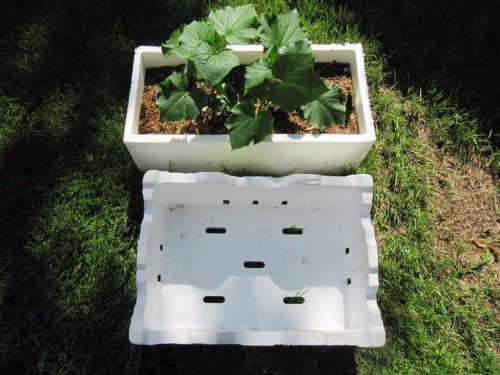Many schools have gardens and it is encouraging to see children growing their own veggies and looking after chooks.
So let’s help them to continue their projects at home in the holidays.
One easy way to grow veggies is in the sort of polyurethane boxes thrown out by supermarkets, but look for the ones with drainage holes in the base. Fill them with premium-grade potting mix.
Easy-to-grow seedlings include lettuce, cucumbers, spinach, capsicums and tomatoes. Quick-growing veggies such as radish give almost instant results when seed sown, while carrots take a little longer. Carrot seed is very fine so don’t cover the seed with soil, but rather place a piece of shade cloth over it. After a few days, when the shoots start to appear, the shade cloth can be removed.
To overcome snails use Multicrop’s Slug and Snail Killer, which is safer for pets or even blue tongue lizards.
WHY is home-grown fruit, such as the seasonal nectarines, peaches and apricots, so much tastier than that bought at the supermarket?
One reason is that supermarket fruit, including tomatoes as a fruit, is picked green or just showing a bit of colour. Whereas at home we wait until it is ripe with the sun developing the full fruit flavour.
It is important that once all the fruiting has finished to give the trees a summer prune. The Royal Horticultural Society considers summer pruning just as important as winter pruning.
OFTEN violent summer storms can bring the hazard of broken tree branches. This week I noticed that a large branch of our silver birch had broken and was suspended over where I normally park the car! When pruning, follow the three “Ds” principle – look for and remove any dead, diseased or damaged branches. This accounts for 90 per cent of pruning.
Look also for branches rubbing against each other, which can damage the bark, the skin of the tree, giving access to pests and diseases. Finally, stand back and look at the overall appearance to ensure it has an even shape.
ALL the berry fruits, such as raspberries and strawberries, will be fruiting abundantly over the next few weeks.
It is important to keep feeding them, preferably with a liquid plant nutrient such as certified organic Neutrog Seamungus (a combination of pelleted chook poo and seaweed), which is good for everything you grow – from veggies, trees and shrubs to lawns.
Quoting a BBC garden broadcaster on chemicals in the garden: “I used to use an annual chemical weed-killer, moss killer and fertiliser application on my lawn. But one day I watched as a blackbird pulled a worm from the treated soil to take back to the young ones in a nest. I reckoned that chemically laden food was not something I would feed my own children, so I now use only organic products and if a few weeds are in the lawn, so what!”
TWO great places for using children’s excess energy are the Australian National Botanic Gardens and Eurobodalla Regional Botanic Gardens. Both have a great range of activities for children.
The post Gardening / The special gift of gardening for kids appeared first on Canberra CityNews.
